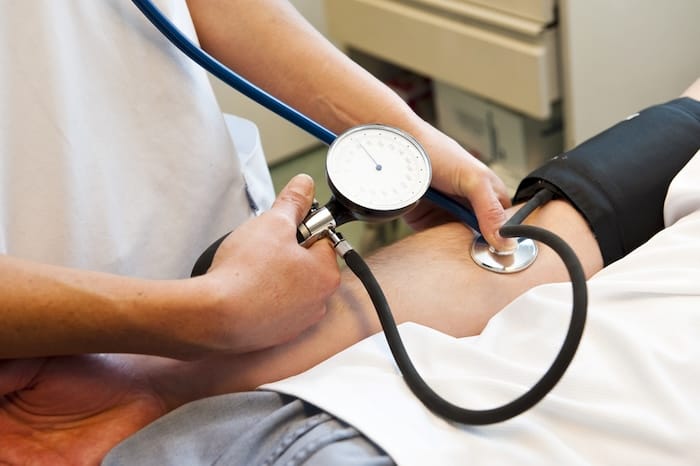- Calls to this hotline are currently being directed to Within Health or Eating Disorder Solutions
- Representatives are standing by 24/7 to help answer your questions
- All calls are confidential and HIPAA compliant
- There is no obligation or cost to call
- Eating Disorder Hope does not receive any commissions or fees dependent upon which provider you select
- Additional treatment providers are located on our directory or samhsa.gov
Eating Disorder Treatment
The world of eating disorder treatment and care is confusing to those that have not had to work within it. For those that have just bravely taken the steps to acknowledge their struggle with an eating disorder and seek support, it can be overwhelming to learn that there are so many levels of care. Beyond determining what level of care is needed, finding the appropriate place to receive care and how to finance it is another feat entirely.
If you or a loved one are feeling overwhelmed by this treatment journey, consider the following information as your “eating disorder cheat sheet.”
Is it Time to Get Help?
This is often the first question that arises once one admits a problem with an eating disorder. How do you know when it is time to seek out professional support? In truth, there is no “wrong” time to get help for your eating disorder and, the longer one waits, the higher the risk that the disorder will worsen.
Consider some of the following signs or symptoms if you are concerned that you or a loved one may struggle with an eating disorder:
- Extreme weight loss and/or weight gain in a short period of time.
- Restriction of foods and/or food groups.
- Increased food “rules.”
- Hyperfixation on food contents and nutritional information.
- Exercising despite injury and/or inclement weather.
- Hiding foods.
- Possessing/using diuretics and/or laxatives.
- Using the restroom often between and/or after meals.
- Withdrawing from loved ones and social situations.
- Increased emotional dysregulation.
- Report of suicidal ideation.
- Feelings of low self-worth.
If any of these are present, reach out to your Primary Care Doctor and/or mental health provider for help. This is particularly true if the above behaviors and symptoms are impacting one’s ability to participate fully in daily living activities such as proper hygiene and self-care, work and/or school routines, and socializing, and maintaining interpersonal relationships.
Adverse health effects such as extreme weight loss or gain, decaying teeth, compromised immune system functioning, concerning lab results, or vitals, dry skin, and/or thinning hair, to name a few, are also signs that an individual is malnourished and needs medical support for disordered eating behaviors.
Treating Specific Eating Disorders
Eating Disorder Treatment Options
Acknowledging the need for help is only the first step in moving toward eating disorder recovery. After this, medical, mental health, and/or eating disorder professionals (preferably all three), can help to determine what level of care the struggling individual requires.
Intervention
Planning an intervention for a loved one struggling with an eating disorder is a methodical ritual that should be handled delicately. There are professionals educated specifically in the process of intervention planning, however, this may not be accessible to you or necessary. Even so, you should always have a mental health professional such as a counselor or therapist as a mediator for interventions.

The foundation of the intervention process is to approach the struggling individual with nonjudgmental, loving, and honest support. Each support person will be given the opportunity to express their perspective and the impact the individual’s behavior has had on them. As you plan for this, engage in your own therapy to express yourself authentically without becoming aggressive or vindictive.
The goal of an intervention is not to make the person feel ashamed but to help them see the impact and severity of their behaviors and support them in moving toward treatment and growth. Do not stage an intervention without also having options for the individual to choose from. Some of these should be treatment options and others should be firm boundaries should the individual choose not to get help. Regardless, remember to lead with love in your approach.
Outpatient
Outpatient treatment involves meeting with a Therapist, Dietitian, and Primary Care Professional at least once per week. This treatment is reserved for individuals in the “Maintenance” stage of change, meaning their eating disorder symptoms are drastic, if not completely, reduced and that they are able to maintain a recovery-focused lifestyle.
Individuals may begin their eating disorder treatment on an outpatient basis whether because of accessibility, finances, and/or willingness. It is important for treatment professionals to acknowledge when the severity of a patient’s disorder is beyond their ability to care for on an outpatient basis and refer the individual to a higher level of care.

While in Outpatient treatment, the individual should continue coordinating with all members of their treatment team. Outpatient appointments can become flexible based on the individual’s level of need at the time. For example, if an individual finds themselves struggling, they might increase therapy appointments to twice per week instead of once or they may implement an additional check-in with their therapist or dietitian. The goal is to provide the individual with the support necessary to live a recovery-focused life.
Intensive Outpatient (IOP)
Individuals recommended for IOP treatment are those that are fairly motivated for recovery and do not require a structured setting to maintain recovery. These individuals are compliant with treatment team recommendations as well.
IOP involves a commitment to, on average, 3 days per week of 3-hour programming. This programming includes individual therapy as well as group therapy and support from a Dietitian and Psychiatrist. IOP can occur either virtually or in person, depending on the treatment center.

The structure of programming helps individuals to receive well-rounded and consistent support while maintaining employment or schooling as necessary. Individuals in IOP live at home while engaging in this programming.
Partial Hospitalization Program (PHP)
A PHP involves individuals living at home while engaging in treatment that is, essentially, a full-time job. Individuals attend programming 5 days per week for 6 to 11 hours each day [1]. This level of care was once provided predominantly in-person, however, COVID has led to many treatment centers providing PHP virtually.
PHP is for those individuals that are beginning to make recovery-focused choices yet still require structure and consistent support to maintain these choices. Individuals enrolled in a PHP will engage in most meals while in programming but will have some meals at home.

Individuals often go to PHP after stepping down from Inpatient or Residential treatment in an effort to increase their independence and accountability while still providing support. Individuals might also begin treatment in a PHP if they do not require 24-hour monitoring and have a supportive home environment.
Criteria that treatment programs look for when recommending an individual to PHP are:
- Greater than 80% of weight as a percentage of healthy body weight
- Partial cooperation with treatment team recommendations
- The individual is preoccupied with intrusive thoughts 3 hours a day or more.
- Can greatly reduce instances of purging in an unstructured setting
- Pt. needs some structure to gain weight [2].
Residential Treatment Center
Residential Treatment involves the struggling individuals living in a treatment center and engaging in programming all day. This treatment involves supervised meals and snacks, sessions with an individual therapist, dietitian, and psychiatrist, group therapy, as well as group activities intended to promote recovery, identity work, and self-care. This treatment also often involves either in-person visitation and/or family sessions with the individual’s support system in-person or virtually.

Individuals appropriate for residential treatment are those that are considered medically stable yet still require 24/7 monitoring by nursing and clinical staff. According to the National Association of Eating Disorders, the following indicates an individual that would meet the criteria to stay in a Residential Treatment Center:
- An individual is less than 85% acute weight decline and engages in food refusal.
- An individual has “very poor” to “poor” motivation.
- Individual struggles with intrusive, repetitive, disorder thoughts at least most of day, every day.
- An individual is uncooperative with treatment or only cooperative in a highly structured setting.
- Individual requires supervision during and after meals.
- An individual has trouble controlling compulsive exercising without structure and accountability.
- An individual is unable to control purging episodes [2].
Inpatient Hospitalization
Inpatient hospitalization is the level of care reserved for individuals with severe eating disorder behaviors that require medical stabilization due to their disorder. Individuals are recommended to this level of care if there are concerns that they would experience severe medical consequences without round-the-clock care and observation from medical professionals.

This level of treatment involves individual and group therapy as well as family therapy sessions and monitored meals yet focus primarily on medical stabilization of the individual, often through intravenous fluids and/or tube feeding.
Counseling
All of the above treatment levels should involve some form of counseling, as it is simply another word for “therapy.” As mentioned above in relation to Outpatient Treatment, counseling is an important part of the treatment team, however, as eating disorders are physical as well as psychological, the most effective approach to treatment involves counseling as well as support from a medical provider as well as a Dietitian.

Support Groups
Support groups are incredibly beneficial for individuals that struggle with accessing treatment centers or financing treatment. Support groups can be in-person or provided virtually and are a more free-form and accessible approach to group therapy. Be advised, there are less limitations on what can be considered a “support group,” therefore, it is important to ask about methodology as well as the education or experience of group leaders. Support groups have been found most beneficial when utilized as an additional component to mental health therapy provided by a licensed professional.

How to Pay for Treatment
Once a team of eating disorder professionals has determined the appropriate level of care for an individual, the question of financing this care arises. Treatment centers are aware that navigating insurance coverage of eating disorder treatment is stressful and overwhelming. It is for this reason that most treatment centers have case managers on staff that is trained to navigate this process either with you or for you.
For higher levels of care such as inpatient hospitalization, residential treatment, partial hospitalization, and intensive outpatient, most treatment centers will have a case manager communicating with your insurance to advocate for you regarding what care is needed and why.

If you are seeking therapy, medical, or dietary support on an outpatient basis, you can contact your insurance company directly to find providers that are in-network with them.
If you do not have insurance or your insurance has been denied coverage, ask your treatment center and providers if you have any other options such as scholarships to finance your treatment. While these options are not always guaranteed, it does not hurt to ask.
How to Find the “Right” Help
As mentioned above, there is no “wrong” time to seek out help for an eating disorder. However, it is important to be aware that the “wrong” help does exist. Seek out professionals that are Certified Eating Disorder Specialists (CEDS) as well as those that report working from an Intuitive Eating and Health at Every Size (HAES) perspective, as these specializations are proven most effective in treating eating disorders. Additionally, look for treatment centers that report using Cognitive Behavioral Therapy (CBT), Dialectical Behavior Therapy (DBT), and/or Family-Based Treatments, as these are the most evidence-based treatments for eating disorders.
The key to finding the support that is appropriate for you or a loved one is to seek out eating disorder professionals. These individuals can help to assess the needs of an individual and recommend treatment centers that can provide this care.
The key to finding the “right” help at the “right” time is to start as soon as a problem is identified. As frightening as it may be to navigate the eating disorder treatment world, it is worth it to come out on the other side recovered.
Resources
- Muhlheim, L. (2019). Which level of eating disorder treatment is right for me. Very Well Mind. Retrieved from https://www.verywellmind.com/levels-of-eating-disorder-treatment-4134267.
- Unknown (2018). Level of care guidelines for patients. National Eating Disorders Association. Retrieved from https://www.nationaleatingdisorders.org/toolkit/parent-toolkit/level-care-guidelines-patients.
Author
Publish Date:
Last Updated:
